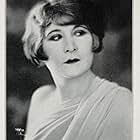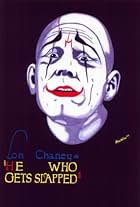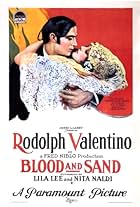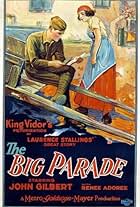When a nobleman murders his best friend, a lawyer becomes a revolutionary with his heart set on vengeance.When a nobleman murders his best friend, a lawyer becomes a revolutionary with his heart set on vengeance.When a nobleman murders his best friend, a lawyer becomes a revolutionary with his heart set on vengeance.
- Awards
- 2 wins & 1 nomination total
Otto Matieson
- Philippe de Vilmorin
- (as Otto Matiesen)
George Siegmann
- Danton
- (as George Siegman)
Bowditch M. Turner
- Chapelier
- (as Bowditch Turner)
James A. Marcus
- Challefou Binet
- (as James Marcus)
Edwin Argus
- King Louis XVI
- (uncredited)
Sibylla Blei
- Maid of Honor
- (uncredited)
J. Edwin Brown
- Monsieur Benoît
- (uncredited)
Louise Carver
- Member of Theatre Audience
- (uncredited)
Storyline
Did you know
- TriviaAn army of workmen built a whole French village that covered sixty acres and was faithfully reproduced down to cobblestone streets and shop windows filled with actual wares. Hundreds of thousands of yards of muslin, satin, brocade, and velvet were required in the making of the gorgeous costumes worn by the cast.
- Alternate versionsOn 5 December 2000, Turner Classic Movies broadcast a 124-minute version with a new musical score written by Jeff Silverman and played by the Janacek Philharmonic Orchestra, Ostravia, Czech Republic, conducted by Hugh Munro Neely. It was the first time the film was shown on television.
- ConnectionsFeatured in Hollywood (1980)
Featured review
Those who are familiar with the well-known 1952 remake of "Scaramouche" might find it difficult to recognize it in this 1923 silent version. The story in this earlier and seldom-seen version is quite different in many respects. Many of the plot points are different, the names of some of the principal characters are not the same and some of the principal characters in this earlier version do not even appear in the remake. The earlier version is also quite different in tone, being rather more in the nature of Historical-Melodrama or Historical-Fiction than the later version, which is much more of a mere swashbuckler. However, the fact is that this earlier version is actually much more faithful to the original book than the remake.
Don't be put off by the fact that this is a silent film produced 100 years ago, because it's production values are excellent. Clearly no available expense was spared to make this production as lavish and authentic to the period (France during the French Revolution), as possible. The director, Rex Ingram, was about as good as one could find at the time.
The cast also features some first rate performers, including perennial MGM favorite Lewis Stone, who was probably with the studio longer than any other actor, so long that he appeared in the 1952 remake. The title role is played by Ramon Navarro, who was a major star in the 1920s. Like Rudolph Valentino, Navarro was a major leading man in the films of the 1920s, and had the title role in the silent version of "Ben Hur". However, unlike Valentino, who died young, Navarro continued to work for many years, though his career as a leading man waned after talkies came in. Navarro's problem in talkies was that he happened to be Mexican, and spoke with an accent.
All in all, "Scaramouche" comes off as a lavish and well produced melodrama set against the background of the French Revolution. The plot points and tone are so different that it should be rated alongside, rather than above or below, the better-known swashbuckling remake. This film is very well worth a look, especially to the many fans of the 1952 version.
Don't be put off by the fact that this is a silent film produced 100 years ago, because it's production values are excellent. Clearly no available expense was spared to make this production as lavish and authentic to the period (France during the French Revolution), as possible. The director, Rex Ingram, was about as good as one could find at the time.
The cast also features some first rate performers, including perennial MGM favorite Lewis Stone, who was probably with the studio longer than any other actor, so long that he appeared in the 1952 remake. The title role is played by Ramon Navarro, who was a major star in the 1920s. Like Rudolph Valentino, Navarro was a major leading man in the films of the 1920s, and had the title role in the silent version of "Ben Hur". However, unlike Valentino, who died young, Navarro continued to work for many years, though his career as a leading man waned after talkies came in. Navarro's problem in talkies was that he happened to be Mexican, and spoke with an accent.
All in all, "Scaramouche" comes off as a lavish and well produced melodrama set against the background of the French Revolution. The plot points and tone are so different that it should be rated alongside, rather than above or below, the better-known swashbuckling remake. This film is very well worth a look, especially to the many fans of the 1952 version.
- robertguttman
- Aug 7, 2013
- Permalink
Details
Box office
- Budget
- $858,723 (estimated)
- Runtime2 hours 4 minutes
- Color
- Sound mix
- Aspect ratio
- 1.33 : 1
Contribute to this page
Suggest an edit or add missing content


































